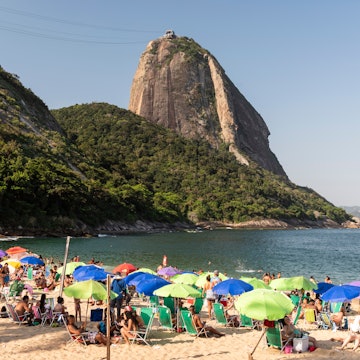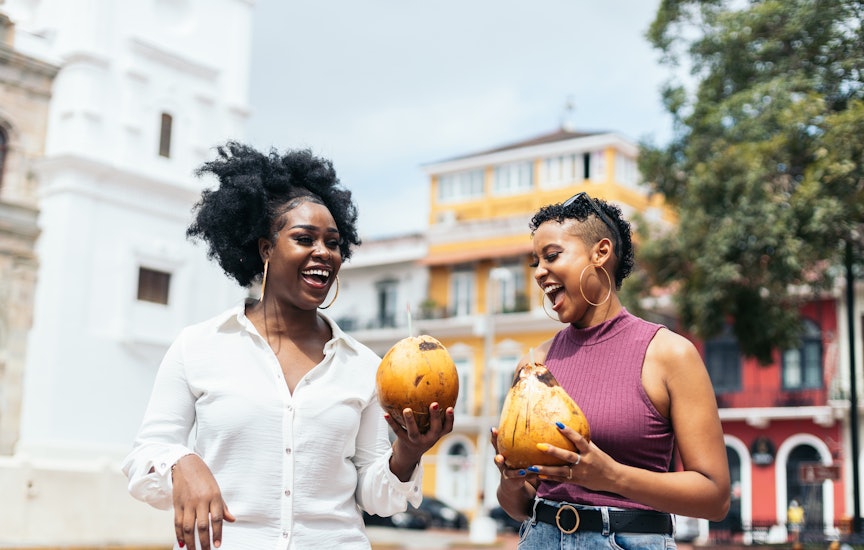

Plan you time, pack the right gear and know what to expect on the ground with these top tips for visiting Bolivia. Kim McAfee/500px
In the heart of South America, Bolivia is home to some of the most dramatic landscapes on the continent.
From pristine rainforests and high-altitude salt flats to cities rich with cultural diversity, there’s an incredible amount to see, do and experience here. As an added plus, accommodation, eating out and transportation are all budget friendly.
From planning the perfect trip to on-the-ground safety and etiquette, there are a few things every traveler should know before setting off to Bolivia. Here are our top tips.
1. Pick the right time to visit
Time your trip to Bolivia to fit in with the weather. It's generally sunny across Bolivia during the high season from May to October, but winter temperatures can drop sharply in the mountainous west, an area known as the altiplano (highlands), so pack warm layers.
This is a good time for trekking and other adventure sports, but demand and prices for tours and accommodations are higher than at other times of the year – it’s sensible to book ahead.
The shoulder season from October to November is a particularly good time to visit the Salar de Uyuni, as the spring brings warmer temperatures, while rain remains scarce. The low season (November to April) is hot and rainy, disrupting transport and making many outdoor activities difficult or unappealing, especially in the lowlands.
2. Check whether you need a tourist visa for Bolivia
Many visitors don’t need a tourist visa to travel to Bolivia – including citizens of the UK, most EU and EEA countries, Canada, Australia, New Zealand, Japan and most nations in South America. But some other travelers – including US citizens – can't visit without a visa. Contact your local Bolivian embassy or consulate to check the latest regulations.

3. Plan to travel beyond the Andes
Bolivia is often described as an Andean country, and many of its top attractions – including Lake Titicaca and the Salar de Uyuni, the world’s largest salt flats – are packed into the altiplano.
But the country is remarkably diverse and you’ll have a much more rewarding experience if you combine Andean adventures with trips to explore some of Bolivia's other fascinating landscapes.
As well as the mountains, make time for the tropical Gran Chiquitania region, the arid wilderness of the Chaco, and the Amazon Basin, which covers roughly a third of the country.
4. Get your jabs before you travel
As with other South American destinations, there are some safety precautions to be aware of. If you’re traveling from a country with endemic yellow fever – which includes neighboring Argentina, Brazil, Colombia, Ecuador, Paraguay and Peru – you may be asked to show your yellow fever vaccination certificate at the border.
You may also need to show a certificate when traveling to areas of Bolivia below 2500m (8200ft).
It is also advisable to make sure your vaccinations for hepatitis A and tetanus are up to date. Jabs for hepatitis B, diphtheria, typhoid and rabies are also worth considering, particularly if you'll be staying in Bolivia for a while.
5. Bring antimalarial medication to Bolivia's lowlands
Malaria is present in lowland areas of Bolivia, most notably the Amazon region, so take antimalarial prophylaxis. Travelers have a choice of antimalarial medications – talk to your doctor to find the best option for you.

6. Give yourself a flexible itinerary
Transport delays are common in Bolivia, thanks partly to bloqueos, roadblocks linked to protests that can sometimes last for several days. Allow some leeway in your travel plans, check the news and ask around locally for the latest info.
Flooding during the wet season from November to April can also cause severe transport disruption, particularly in the southeast, so plan accordingly.
7. Learn some Spanish before you go
English is spoken quite widely in touristy areas such as Sucre, Uyuni and Rurrenabaque in the Amazon region, but you'll encounter fewer English speakers when you head off the beaten track.
It’s well worth learning some simple Spanish phrases – or better yet taking some formal Spanish lessons – before you arrive in the country. At the very least, learn enough Spanish to help you find the right bus and arrange a meal and hotel room.
8. Pack the right gear
Whatever the time of year, the weather in Bolivia varies with the terrain. It’s worth bringing a rain jacket, walking boots and sunglasses, plus – if you’re visiting the chilly altiplano – thermal underlayers and a warm fleece.
9. Bring cash to more remote parts of Bolivia
While ATMs (cajeros automáticos) are common in cities and larger towns, they can be hard to find in rural areas, so always carry some cash with you. And don’t accept torn, repaired or tatty boliviano notes as change – these can be hard to spend (even though they officially remain legal tender).

10. Use Spanish greetings when meeting people
To an extent, Bolivian society is still quite formal. It’s normal to greet someone with a polite buenos días (good morning), buenos tardes (good afternoon) or buenos noches (good night).
When addressing people, use señor or señora (Mr or Mrs) or a formal title such as doctor where appropriate. Stick to the formal usted ("you") for people you don't know well, rather than the informal tú.
On the altiplano, the male and female forms of "friend" – amigo and amiga – are commonly used.
Saying please (por favor) and thank you (gracias) is just good manners. When eating out, buen provecho (enjoy your meal) is another handy phrase to remember.
11. Be respectful when taking photos of people
Always ask permission before taking a photo of someone, particularly when you’re in the countryside. Many people from Bolivia's minority communities prefer not to be photographed – if someone refuses permission, respect their wishes.
12. Always protect yourself against mosquito bites
While antimalarials reduce the risk of catching malaria, they don't eliminate it entirely, and mosquitoes and other biting insects can also spread other diseases such as Dengue fever, Chagas disease and Zika virus.
It’s important to take precautions to avoid being bitten, such as wearing long-sleeved tops, trousers and socks (ideally in light colors), sleeping under a mosquito net and using an effective mosquito repellent.
Creams, sprays and plug-in mosquito killers with high concentrations of DEET (diethyltoluamide) tend to be the best bets.
13. Don't drink Bolivian tap water
The tap water in Bolivia is not safe to drink, but bottled water is inexpensive and widely available, or you can purify your own.
If you plan to go hiking, it’s worth bringing a reverse osmosis water filter and/or water purification tablets to reduce the weight of your backpack and cut down on plastic waste.

14. Take the altitude seriously
Altitude sickness can be a serious problem in western Bolivia. Many tourist destinations are at elevations above 3000m (9840ft), and acute mountain sickness (AMS) is a risk, even if you’re physically fit.
This includes the cities of La Paz and Potosí, Lake Titicaca and the Salar de Uyuni, as well as El Alto airport, which at 4062m (13,327ft) is the highest international airport in the world.
The risk of AMS increases the faster you ascend and the higher you climb, and strenuous effort at altitude can also be a factor. Initial symptoms include headaches, nausea, vomiting, dizziness, malaise, insomnia and loss of appetite, but AMS can cause coma and death.
Take the time to acclimatize properly, and pause for rest days without increases in elevation on any sustained climb. Avoid overexerting yourself, eat light meals, avoid alcohol and get plenty of rest.
Some trekkers and climbers take medicines such as acetazolamide or local remedies such as coca leaves and coca tea, but these merely reduce or delay symptoms. If you suffer any serious symptoms of AMS, descend promptly to a lower altitude and seek medical help immediately – altitude sickness can be life-threatening.
15. Don’t take coca products out of the country
The coca plant has been sacred to people across the Andes for thousands of years and a third of Bolivians regularly chew coca leaves, drink coca tea and consume other coca products.
But while the plant is legal in Bolivia, it is illegal almost everywhere else as the leaves are used to produce cocaine. Do not take any coca leaves or coca products home with you – customs authorities take these items very seriously.
16. Women travelers have reported harassment
There is generally less machismo in Bolivia than in many other South American countries, particularly in Andean cities.
However, women travelers still face a certain amount of hassle and harassment, especially during the carnival period (February to March) when there has been more alcohol consumed. It is not considered safe to walk alone at night or in remote locations.
17. There is discrimination towards the LGBTIQ+ community
The Bolivian constitution expressly bans discrimination based on sexuality or gender identity, but same-sex marriage remains illegal and members of the LBGTIQ+ community still face prejudice and discrimination.
There are LGBTIQ+ bars and venues in the bigger cities, most notably La Paz and Santa Cruz, which was the setting for Bolivia’s first-ever Pride march in 2001. In more rural areas, public displays of affection may attract unwelcome attention.















